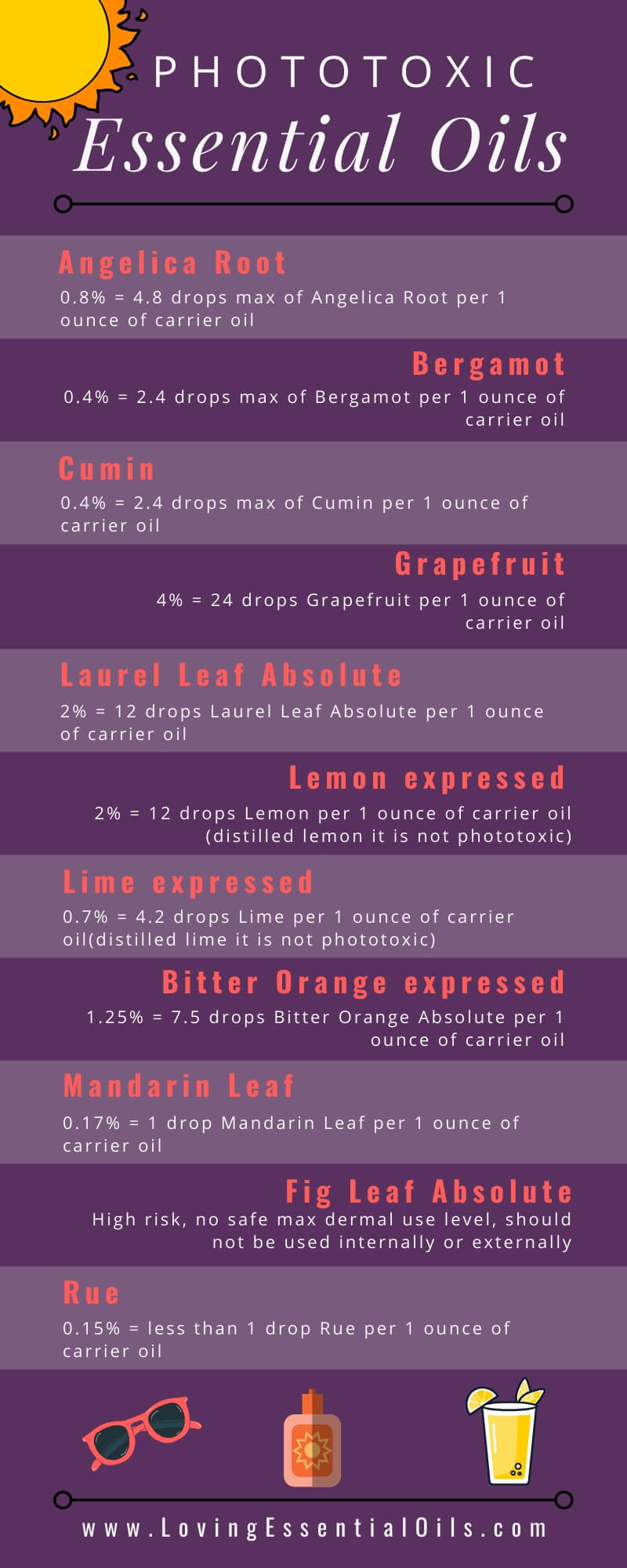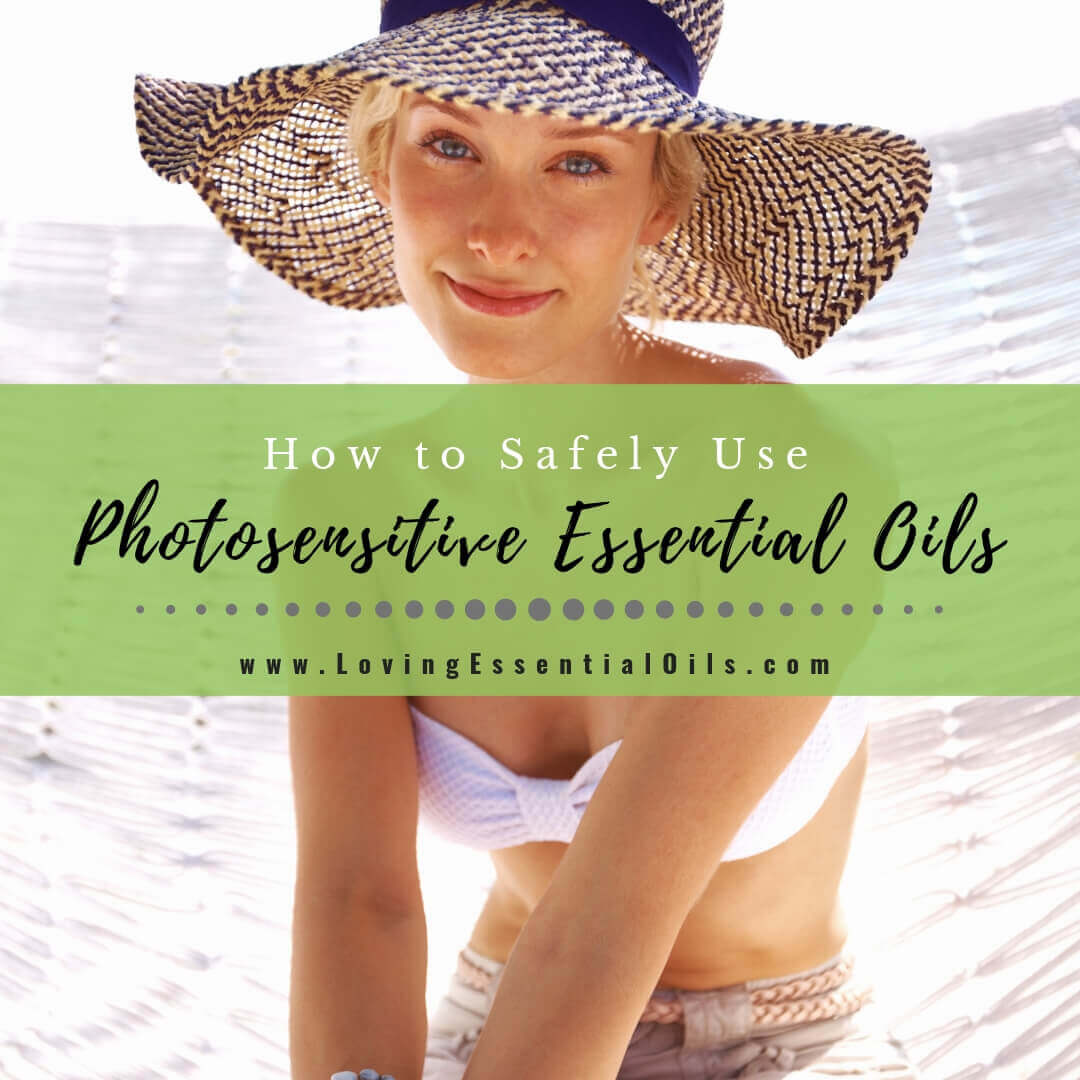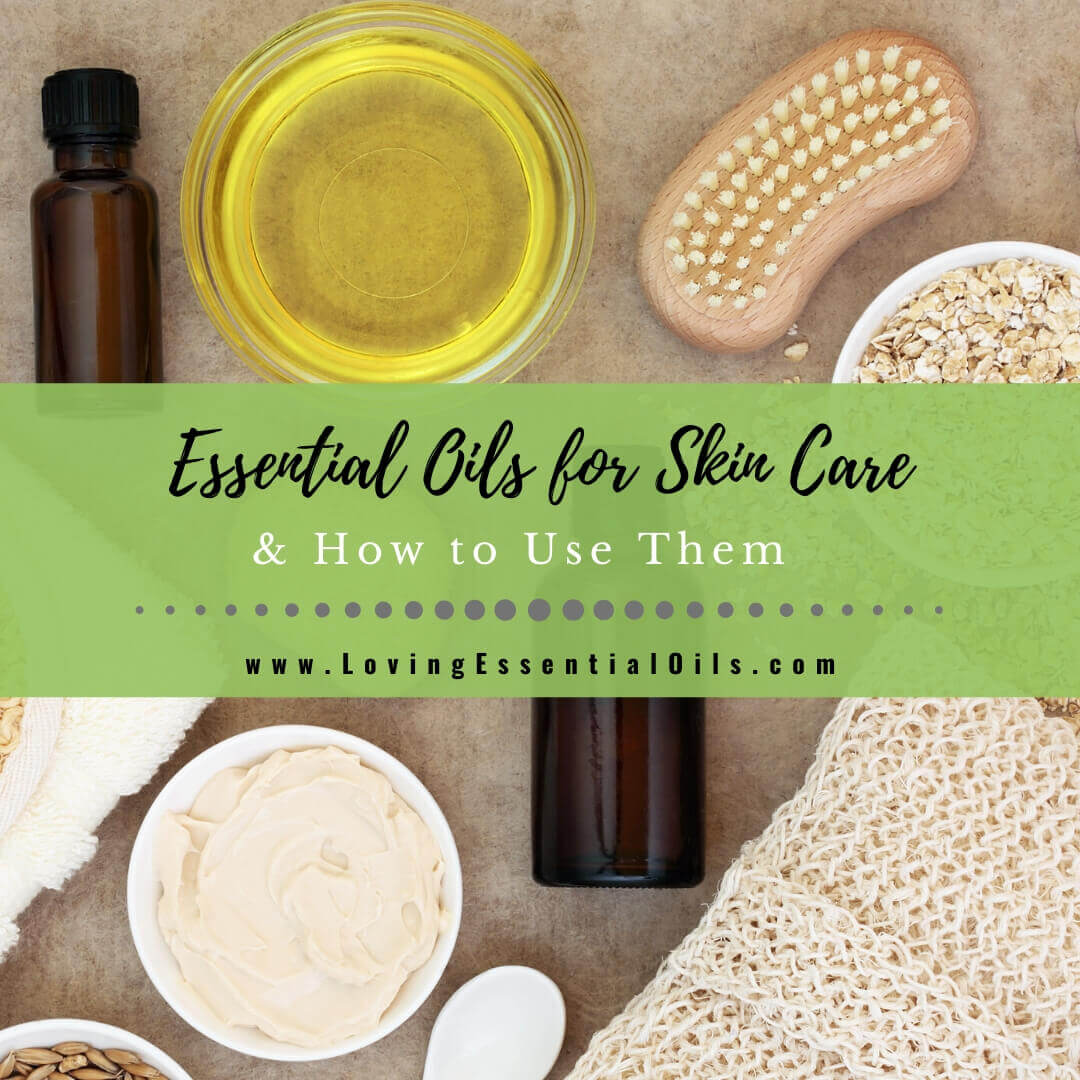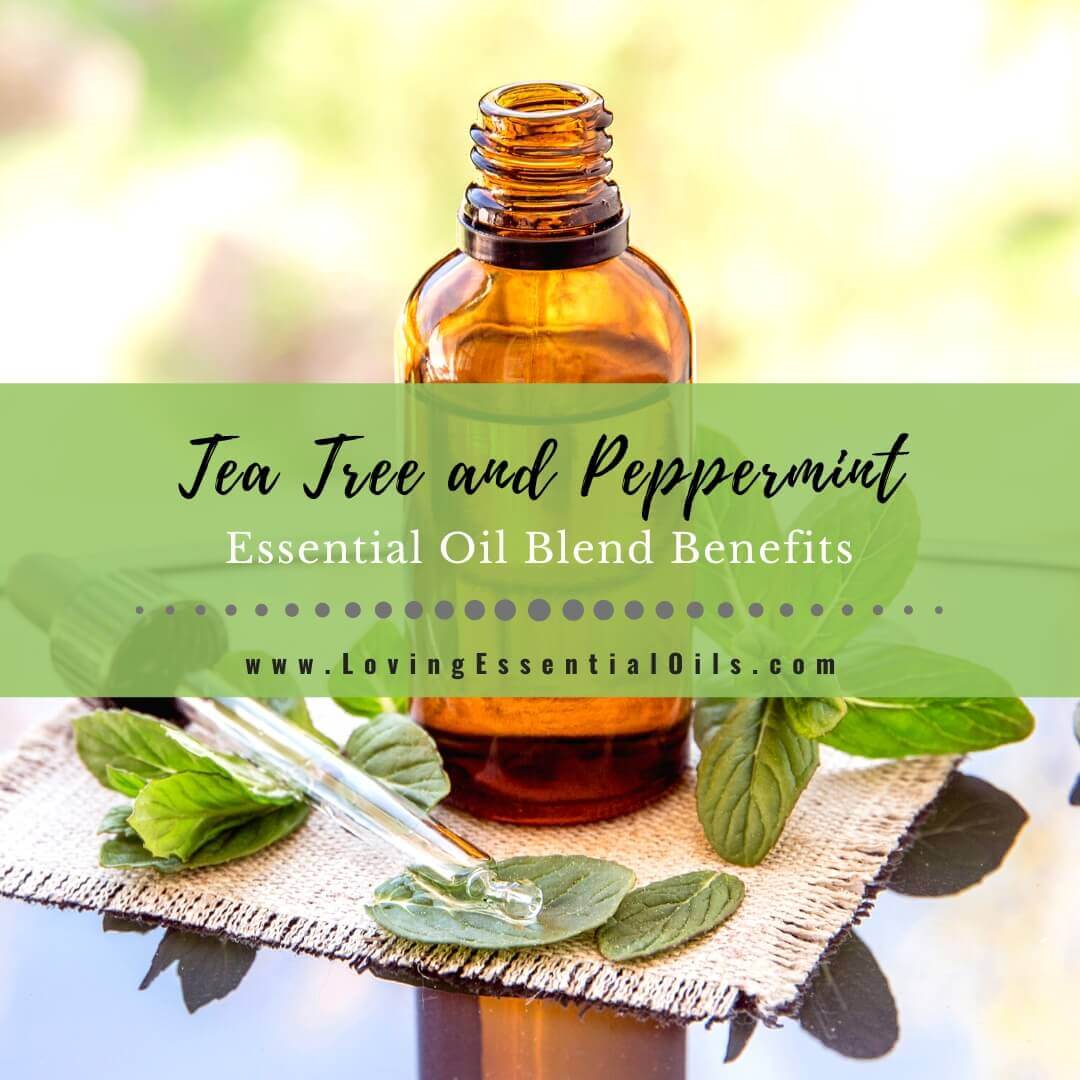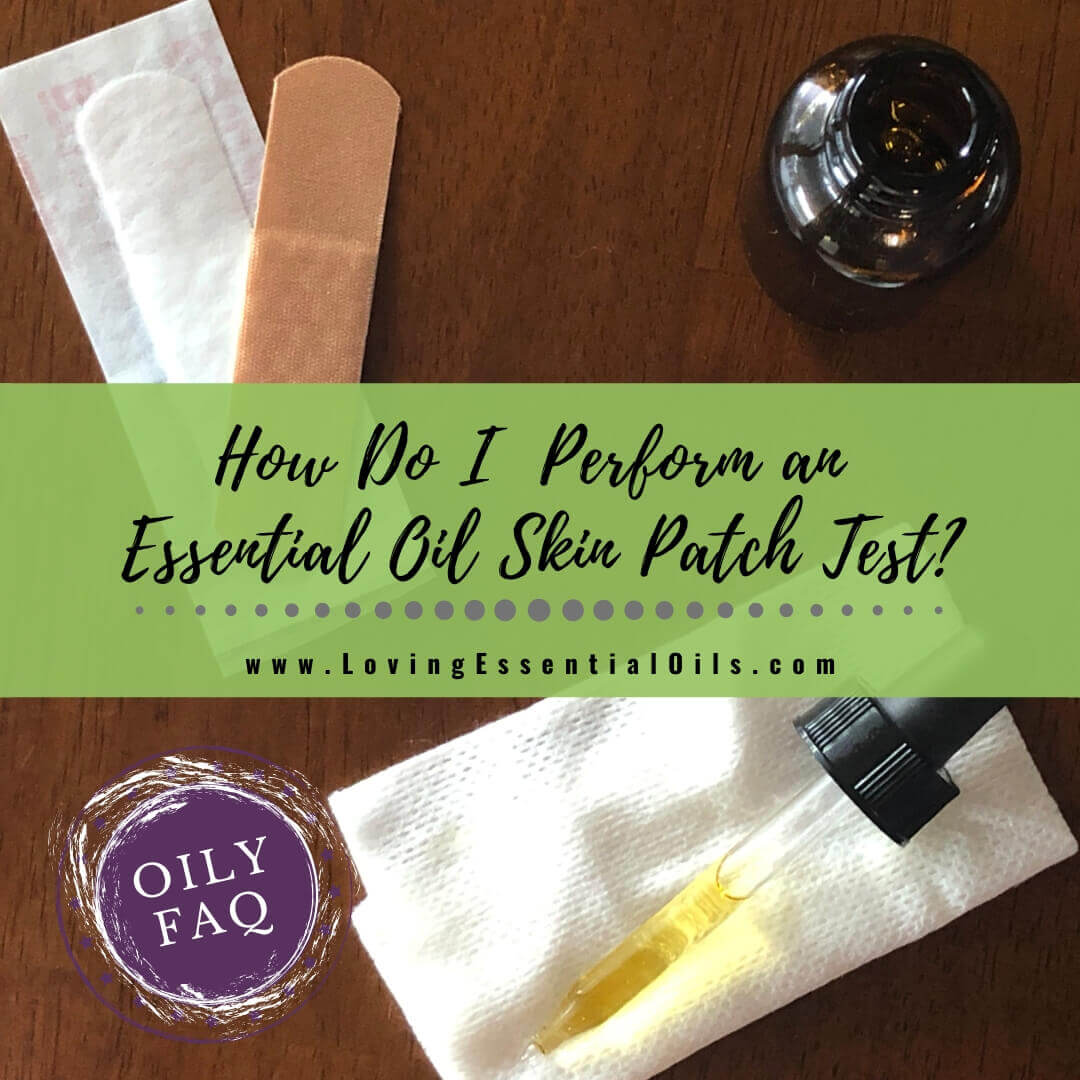Learn about photosensitive essential oils and how to keep yourself safe when it is sunny outside. Don't let a fun day in the sun end with an essential oil disaster.
Did you know that many essential oils can cause photosensitization? Photosensitization is when your skin becomes hypersensitive to UV rays, typically from the sun.
When certain essential oils are used topically on the skin, and then that skin is exposed to sun light (or tanning beds), skin damage can occur. Being informed is the best way to avoid unwanted side effects of phototoxic essential oils.
To learn more about how to protect yourself and which essential oils are photosensitive, read on!
What is Essential Oil Photosensitization?
Essential Oil Photosensitization (aka phototoxicity) can occur when certain natural essential oil constituents react when exposed to UV light. This kind of phototoxic damage to the skin can be permanent.
This reaction is also known as photocontact dermatitis: “a reaction to a substance applied to the skin that occurs only in the presence of UV light in the UVA range, and it may be either phototoxic or photo allergenic.” - Essential Oil Safety (2nd Ed) by Tisserand & Young, pg. 84
Essential oils containing furanocoumarins react to UV light and can cause an inflammatory response in the skin.
Signs of Essential Oil Phototoxic Reaction
Phototoxic reactions can occur up to 18 hours after the oil is applied topically to the skin and then exposed to UV light. Also keep in mind the risk of phototoxicity increases if you are putting several oils with photosensitizing properties in a blend.
- Exaggerated sunburn and blisters (most common reaction)
- Serious reddening of the skin may appear.
- Severe reddening and swelling with marked pigmentation changes may also occur.
- Pigmentation changes may be permanent or resolve slowly over time.
"Certain drugs, such as tetracycline, increase the photosensitivity of the skin, thus increasing the harmful effects of photosensitizing essential oils under the necessary conditions." -NAHA
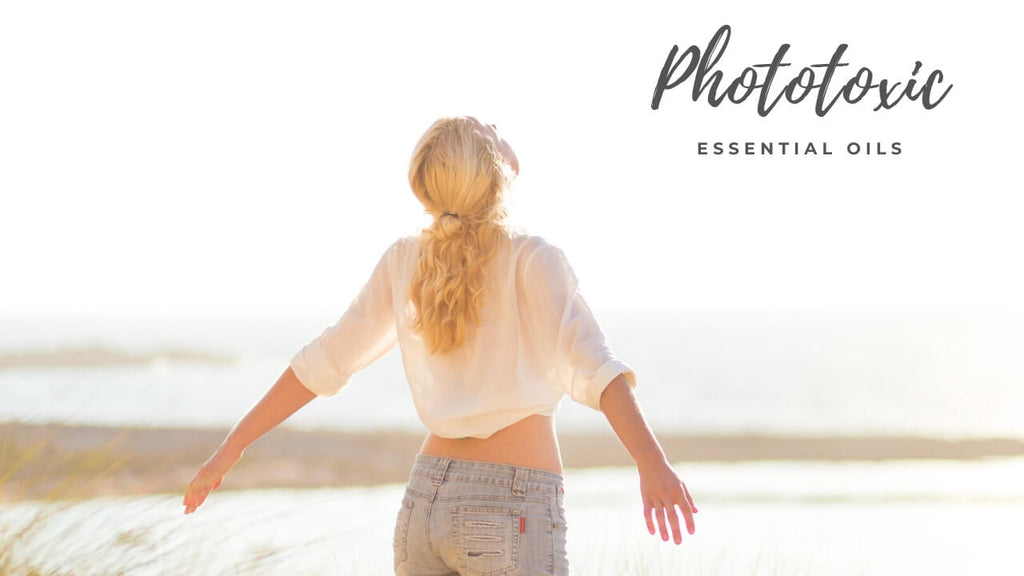
Photosensitive Essential Oils
Here are the phototoxic oils that you should avoid applying topically if you will be in the sun. When properly diluted, you can use photosensitive essential oils in the sun without getting sunburned. I have included the recommended maximum dermal use levels to avoid phototoxic reactions.
You can read more about it in Essential Oil Safety (2nd Ed) by Tisserand & Young, page 84-88. This is a very technical book so if you are into science you will enjoy it, it is more textbook type then an easy read.
Angelica Root (Angelica archangelica)
Angelica Root essential oil has an earthy, woody, and spicy scent that is beneficial for the respiratory system. It is helpful for relieving congestion, soothing the lungs, and expectorating mucus. Additionally, Angelica Root oil is helpful for the digestive system, and it can be used to relieve digestive issues such as gas and bloating.
- Safe Level: 0.8% - That's about 4.8 drops max of Angelica Root per 1 ounce of carrier oil
Bergamot (Citrus bergamia)
Bergamot essential oil has a sweet, fruity, citrusy scent. It is a cirtus oil that is well known for its uplifting and refreshing properties. Bergamot oil is a great oil to use for alleviating stress and tension, try our bergamot roll on. It can also help to improve moods and is a great oil to use for aromatherapy.
- Safe Level: 0.4% - That's about 2.4 drops max of Bergamot per 1 ounce of carrier oil
Cumin (Cuminum cyminum)
Cumin essential oil has a host of benefits, including joint pain relief, digestive aid, and anti-inflammatory effects. Additionally, cumin oil is a natural antiseptic and can be used to disinfect wounds and assist with skin infections. Cumin oil has a warming effect on skin when applied topically that will help you feel warm and cozy.
- Safe Level: 0.4% - That's about 2.4 drops max of Cumin per 1 ounce of carrier oil
Grapefruit (Citrus paradisi)
Grapefruit essential oil is known for its uplifting, invigorating, and refreshing scent. It is also known to be detoxifying and cleansing. Grapefruit oil is beneficial for the skin, and can be used to help reduce the appearance of cellulite and wrinkles. Additionally, it has a rejuvenating scent for the home.
- Safe Level: 4% - That's about 24 drops max of Grapefruit per 1 ounce of carrier oil
Laurel Leaf Absolute (Laurus nobilis)
Laurel leaf essential oil is different than laurel leaf absolute. Most commonly found is the essential oil type. Learn more about the difference between essential oils and absolutes.
- Safe Level: 2% - That's about 12 drops Laurel Leaf Absolute per 1 ounce of carrier oil
Lemon expressed (Citrus limon)
Lemon essential oil benefits include its ability to promote a positive mood, boost energy levels, increase cognitive function, and improve digestion. It can be used as a topical agent to improve skin health. Additionally, Lemon oil is known for its detoxifying properties, as well as its ability to fight bacteria, fungus, and other harmful organisms.
- Safe Level: 2% - That's about 12 drops Lemon per 1 ounce of carrier oil, if you buy distilled lemon it is not phototoxic
Lime expressed (Citrus aurantifolia)
Lime essential oil is refreshing and uplifting. It is known for its antiseptic and astringent properties, and is helpful for oily skin. Lime oil is also helpful for boosting energy and combating fatigue. Read all about sun safe lime essential oil that is steam distilled.
- Safe Level: 0.7% - That's about 4.2 drops Lime per 1 ounce of carrier oil, if you buy distilled lime it is not phototoxic
Bitter Orange expressed (Citrus sinensis)
Like other types of orange essential oil, bitter orange essential oil benefits include its ability to help relieve anxiety, boost energy levels, improve circulation, and help detoxify the body. Additionally, bitter orange oil can also be used to help uplift moods and reduce stress levels. I prefer to use sweet orange essential oil, it is sun safe.
- Safe Level: 1.25% - That's about 7.5 drops Bitter Orange per 1 ounce of carrier oil
Mandarin Leaf (Citrus reticulata, Citrus nobilis)
Mandarin leaf essential oil is not common and is different from mandarin essential oil. When purchasing mandarin essential oil, verify it is cold pressed/expressed from the outer peel (not the leaf). Mandarin oil cold pressed from the peel is considered a sun safe essential oil.
- Safe Level: 0.17% - That's about 1 drop Mandarin Leaf per 1 ounce of carrier oil
Fig Leaf Absolute (Ficus carica)
Fig leaf absolute should not be used, either internally or externally, due to its extreme phototoxic and sensitizing potential.
- Safe Level: High risk, no safe maximum dermal use level
Rue Essential Oil (Ruta graveolens)
Rue not a recommended essential oil for aromatherapy. It is an oral toxin and skin/mucous membrane irritant, as well as abortifacient.
- Safe Level: 0.15% - That's less than 1 drop Rue per 1 ounce of carrier oil
There are a few more essential oils that are possibly phototoxic according to Tisserand & Young:
- Clementine
- Combava Fruit Oil
- Skimmia Oil
- Angelica Root Absolute
- Angelica Root CO2 extract
- Celery Leaf Oil
- Celery Seed Absolute
- Cumin Seed Absolute
- Cumin Seed CO2 extract
- Khella Oil
- Lovage Leaf Oil
- Parsnip Oil

How to Avoid Photosensitization
Learn how to protect yourself against essential oil photosensitivity, here are some ways to safely use these oil.
1. Use Aromatically Instead
The simplest way to avoid photosensitization is by not applying the phototoxic oils to the skin. This may seem extreme but you can enjoy these oils aromatically instead. Use the oils in a diffuser, on an aromatherapy inhaler, or on an essential oil diffuser necklace.
2. Dilute Properly
Photosensitive essential oils can still be used safely on the skin, even with exposure to UV light, as long as they are properly diluted. See the recommended amount listed for each oil above.
3. Enjoy in Wash Off Recipes
It is still OK to use these phototoxic essential oils in hand soaps, body washes, and other DIY Recipes that are washed off. This would not include soaking in a bathtub since your skin is in contact for longer periods of time, as opposed to a wash-off product.
“There is generally no phototoxic risk if the oils are used in a product that is either not applied to the body or is washed off the skin, such as shampoo, bath preparation, or soap. However, essential oils can adhere to the skin if used in a sauna or steam inhalation.” - Essential Oil Safety (2nd Ed) by Tisserand & Young, pg. 88
4. Avoid the Sun
Avoid any UV light for 12-18 hours after you apply the oil to exposed skin. Have a great skin care recipe that you love to use with grapefruit or lemon? Try to apply in the evening time.
5. Cover Up
Covering up any skin where photosensitive essential oils have been applied topically can help avoid a phototoxic reaction. Just be sure the fabric offers adequate protection, a thin T-shirt may not be enough.
"There is no risk if the skin to which the oils are applied is covered in such a way as to prevent UV rays from reaching them." -Essential Oil Safety by Tisserand & Young, pg. 88
6. Use Essential Oils that are Sun Safe
There are many essential oils that can be substituted for these phototoxic oils. Try a different oil that is not on the phototoxic list but has similar actions or aroma that you desire.
While cold pressed (expressed) Lime and Lemon essential oils are phototoxic, if they are steam distilled, they lack the component that causes sun sensitivity and therefore are not phototoxic.
"The furanocoumarins are relatively non-volatile molecules and are generally found in expressed (cold-pressed) citrus fruit oils, but not in distilled citrus fruit oils." - Essential Oil Safety (2nd Ed) by Tisserand & Young, pg. 85
This is really great news! You can still use Lime and Lemon essential oils as long as they are steam distilled and not have to worry about sun exposure. Plant Therapy offers distilled Lime and distilled Lemon, check them out:
- Steam Distilled Lime Essential Oil from Plant Therapy
- Steam Distilled Lemon Essential Oil from Plant Therapy
Bergamot FCF Essential Oil
Bergamot can be purchased with the Bergaptene content (Furocoumarin) removed. It is called Bergamot FCF essential oil (FCF: Furanocoumarin Free). Rocky Mountain Oils has this variation available, check it out:
Sun Safe Citrus Essential Oils
Many people are misinformed about citrus oils, not all citrus essential oils are phototoxic. There are several that are safe to use in the sun.
- Bergamot FCF - bergapten-free/furanocoumarin-free (Citrus bergamia)
- Steam Distilled Lemon (Citrus limon)
- Steam Distilled Lime (Citrus x aurantifolia)
- Mandarin (Citrus reticulata)
- Sweet Orange (Citrus sinensis)
- Tangerine (Citrus reticulata, Citrus nobilis, Citrus tangerine)

Featured DIY Recipe
Sun Safe Citrus Blend |
Here is a cheerful citrus blend that contains only sun safe essential oils. The trio of oils is uplifting and a perfect scent to enjoy on a warm and sunny day.
Directions: Add drops of essential oils to pump bottle, fill the rest of the bottle with jojoba. Shake to blend. To use, squirt a pump of oil and rub onto the desired area. 2% dilution level. |
Free Cheat Sheet - Sun Safety and Essential Oils Guide
As sun-drenched days become the norm, many of us love to keep our skin feeling fresh and fragrant with essential oils. Some essential oils can make your skin more sensitive to the sun.
Get our quick reference guide for Photosensitive Essential Oils. No email required, just please share this post on social media so your friends and family can enjoy these essential oil safety tips.
Share on Pinterest
